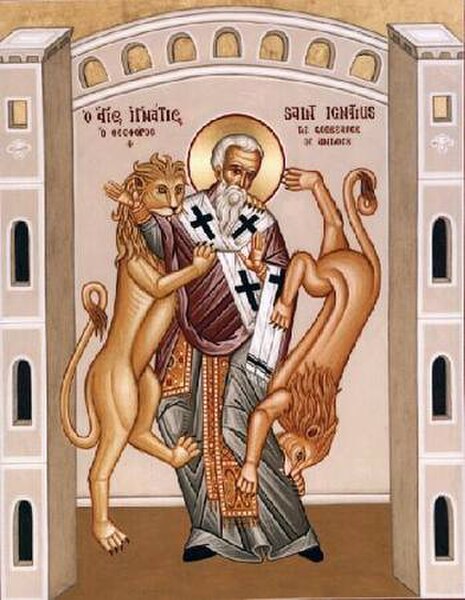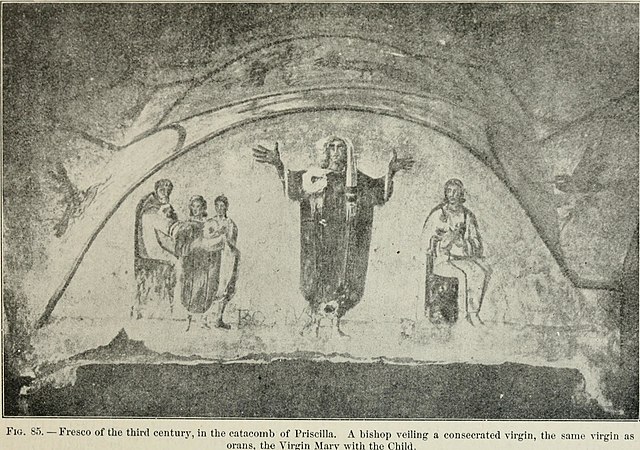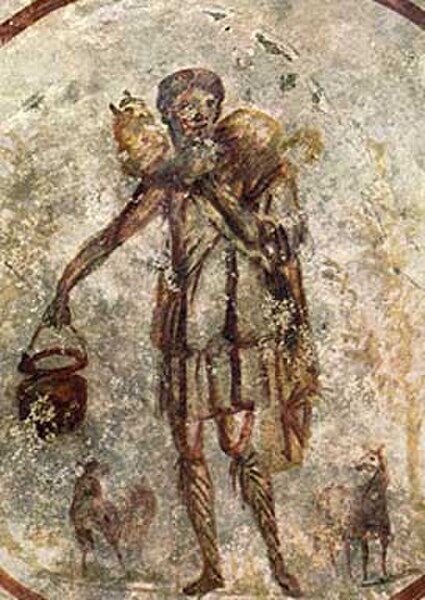Christianity in the ante-Nicene period
Christianity in the ante-Nicene period was the time in Christian history up to the First Council of Nicaea. This article covers the period following the Apostolic Age of the first century, c. 100 AD, to Nicaea in 325 AD.
Funerary stele of Licinia Amias on marble, in the National Roman Museum. One of the earliest Christian inscriptions found, it comes from the early third-century Vatican necropolis area in Rome. Upper tier: dedication to the Dis Manibus and Christian motto in Greek letters ΙΧΘΥϹ ΖΩΝΤΩΝ (Ikhthus zōntōn, "fish of the living", a predecessor of the Ichthys symbol); middle tier: depiction of fish and an anchor; lower tier: Latin inscription of the identity of the deceased
Fresco showing a woman wearing a headcovering praying in the gesture of orans (3rd century)
Christ Jesus, the Good Shepherd, third century.
Ignatius of Antioch, one of the Apostolic Fathers and the third Bishop of Antioch, was considered a student of John the Apostle. En route to his martyrdom in Rome (c. 108), Ignatius wrote a series of preserved letters which are examples of late-1st to early-second-century Christian theology.
Proto-orthodox Christianity
The term proto-orthodox Christianity or proto-orthodoxy describes the early Christian movement that was the precursor of Christian orthodoxy. Older literature often referred to the group as "early Catholic" in the sense that their views were the closest to those of the more organized Catholic Church of the 4th and 5th centuries. The term "proto-orthodox" was coined by Bentley Layton, but is often attributed to New Testament scholar Bart D. Ehrman, who has popularized the term by using it in books for a non-academic audience. Ehrman argues that when this group became prominent by the end of the third century, it "stifled its opposition, it claimed that its views had always been the majority position and that its rivals were, and always had been, 'heretics', who willfully 'chose' to reject the 'true belief'."

Ignatius of Antioch, one of the Apostolic Fathers, was the third Patriarch of Antioch, said to be a student of John the Apostle. En route to his martyrdom in Rome, Ignatius wrote a series of letters which exemplify very early Christian theology, dealing with such topics as modification of the sabbath to Sunday, promotion of the office of bishop, and critique of "Judaizers".




